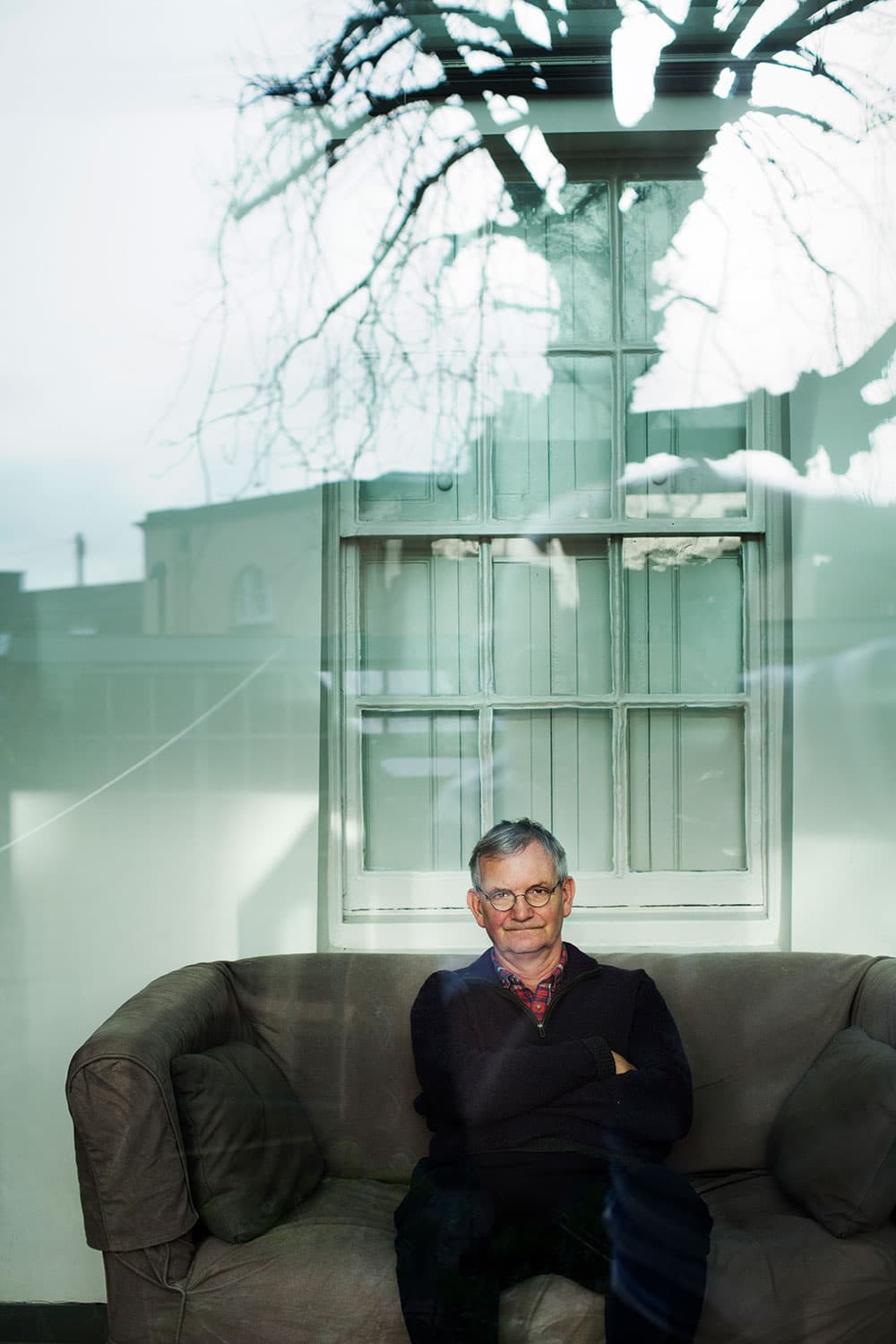
This was taken near the beginning of the shoot but I thought it was interesting only after I got home. Images by Harry Borden
I first saw Martin Parr’s work in 1986, when I was in my late teens and a student at Plymouth College of Art & Design. I wasn’t particularly diligent about attending exhibitions, but a selection of photos from his series The Last Resort was on display at the local arts centre. At that time, most documentary work was shot in black & white on 35mm cameras using natural light, but these were bright, colourful, medium-format pictures shot with fill-in flash. They represented a seismic change in the genre.
I was blown away by the pictures and I think the series still stands up as an important body of work. I’ve been a fan of Parr’s work ever since.
Thirty years later, in January 2016, I was given the opportunity to shoot a portrait of him. The commission came out of the blue from The Independent. I was offered next to nothing to do the shoot, but I really wanted to meet him. I asked my assistant, Amy Romer, to join me. I said I didn’t have much of a budget, but she said she wanted do it for the same reason I did.
I went to see him at his home in Clifton, Bristol. I find that shooting a portrait of a photographer, particularly one I admire, is a little different from shooting anyone else. Naturally, I wanted him to like me, and both Amy and I were hanging on his every word. However, he’s very business-like and clipped in his manner, and I took his reserve to be impatience, so was feeling quite nervous at first.
I was faffing around, a bit like a mosquito buzzing around him, but gradually found my feet and started to build momentum as I photographed him in different rooms around the house. Everything was shot on my Canon EOS 5D Mark III, using natural daylight.
I always try to get as many images as I can when I’m shooting a portrait; I’m pacing up and down like a caged tiger beforehand, then when I start I’m straight into it. Afterwards I’m exhilarated, because it’s nice to have a variety of images that reflect the relationship I had with that person.
The main picture shown here was taken at the beginning of the shoot. Parr was sitting on a sofa in a kind of lean-to attached to the back of the house. I took a few shots inside before stepping outside, shooting through the glass and incorporating the reflections. I only shot a couple of frames. The reason his expression was quite wary was that he was probably wondering what on earth I was doing.

Parr with his wife Susie. Parr is an imposing figure and the steep hill accentuates this
Usually, getting the shoot under way assuages my nervousness because I can look at the back of the camera, see I’ve got something good and move on to the next location. But when I saw this picture, it wasn’t one that calmed me. It was difficult to balance the exposure for Parr while retaining detail in the reflections, so I’d deliberately underexposed.
It was only when I got home and looked at it on my computer screen, that I thought it looked interesting. After I’d worked on it in Photoshop to bring out the shadow detail, I was pleased with it. Shooting through the window gives it a slightly voyeuristic element and implies the sitter is not fully consenting. That’s where the picture’s energy comes from.
I had the run of Parr’s house and he did everything I asked of him. His wife, Susie, kindly made us some coffee and got on with other things while we did the shoot. At the end, I suggested I could do a portrait of them together and we walked a little way down the street, where I photographed them on a steep hill. Using that hill worked quite well, as it accentuated Parr’s physical stature. Asking them to lean together and support each other was also symbolic, because no man is an island.
During the shoot, I asked if I could buy one of his prints from the Last Resort series and we hammered out a deal. I was in touch with him a few times after that and sent him a copy of my book, Survivor. He later reviewed it as his book of the week on the Photo-Eye website, which I didn’t expect. He was flattering about my portraits and said they were ‘very telling’. As he’s someone who’s very measured and chooses his words carefully, I was pleased with the compliment.
The Independent was one of the first papers I’d worked for when I started out as a freelance, because the editors liked to give younger photographers their first break. So it was poignant that for my last shoot before it became a web-only publication it enabled me to meet and photograph one of my heroes.
Harry Borden
UK portrait photographer Harry Borden has won prizes at the World Press Photo awards (1997 and 1999), and in 2014 he was awarded an Honorary Fellowship by the Royal Photographic Society. The National Portrait Gallery collection holds more than 100 of his images. His book, Survivor: A Portrait of the Survivors of the Holocaust, is available now.







